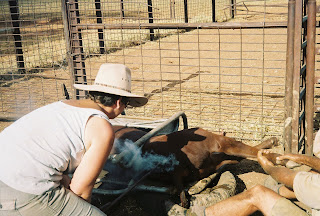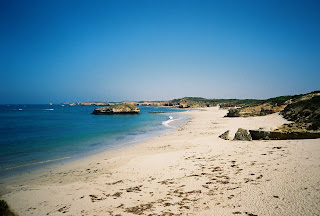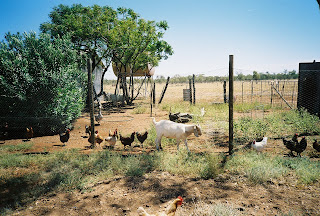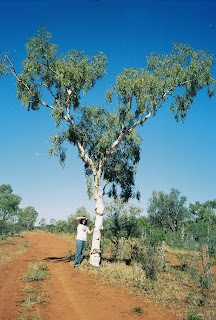If you answered women-only travel, you are correct! In recent years all kinds of travel experts--from tour operators to travel gear manufacturers to guidebook publishers--have finally woken up to the purchasing power of the female traveler. Of course, in truth women have been traveling the world for centuries, same as men, and sometimes against great odds. But for some reason the tourism industry has long ignored women as a target market in favor of men (with the occasional exception of women who travel with men or a mixed group).
In just the past decade, things have changed. Women who wander are finally getting their due. So much so that many tour companies are beginning to offer tours for women only--and some tour companies offer nothing but women-only tours. Indeed, the number of women-only tour operators has increased over 200% in just the past six years.
If you’ve never taken a women-only tour (or maybe never taken any kind of package tour), you might wonder what the benefits of a tour tailored just for women could be. Here are 5 reasons to take a women-only tour.
| In the village of Compiègne in France. Statue is of Joan of Arc: soldier, French patron saint, hero. Compiègne is where Joan was captured by the Burgundians and sold to the English. |
1. Safety: Safety is a top priority for anyone who travels, but especially for women. A good tour operator will make the safety of all its passengers a priority when planning and leading a tour. A women’s tour operator, however, may be better keyed into the concerns women travelers have beyond the usual safety concerns of reliable transport or getting sick or injured while abroad. Taking women’s safety concerns seriously includes choosing hotels with good security and located in safe neighborhoods and areas. It also includes being aware of cultural differences in regards to attitudes towards women around the world and preparing your passengers for these differences. Places that may be safe for a woman in the U.S. or England may be unsafe or off-limits in other parts of the world. Behavior or dress deemed innocent or appropriate in one culture may be very offensive in another. A good tour company and tour leader will respect these differences so that their passengers will follow. But a women’s tour company and female tour leaders have better insight into how these differences affect the traveling enjoyment and cultural understanding of female tourists. Yes, there are many understanding and supportive male travelers in this world--but only another woman truly knows what it’s like to go through life and move about this world as a woman.
| In front of the Apollo Theatre in Harlem, New York City. Dedications to two of the greatest voices of the 20th century. |
2.
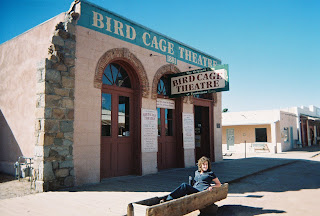 |
| The Bird Cage Theatre in Tombstone, Arizona: saloon, gambling hall, and brothel. |
As a woman who’s taken all kinds of tours over the years, I’ve noticed how many of them focus on famous men and men’s achievements in their commentary. I’ve gone on tours where women are barely even mentioned in the history of the place, as if we were touring some magical spot on Earth where women never lived. Once while in Flagstaff, Arizona, I even signed up for a day trip to the Grand Canyon and happened to be the only woman on the trip, which was being led by a young man from the Netherlands. After leading our group over to a more secluded section of the South Rim and passing out our packed lunches, our leader told us he was going to tell us a little more about the Canyon, including a good story he knew. The story he told us ended up being about a woman a few years before who was obsessed (as our guide put it) with the movie “Thelma & Louise” and decided to drive off the rim of the Canyon like the characters in the movie. But she unwittingly drove off a well-leveled part of the rim and her car merely landed on a lower ledge and dangled there for awhile until she was rescued.
OK, deep breath. Geologically the Grand Canyon is one of the most extraordinary places on our planet, and in terms of story-telling it is rich with the folklore of the Native Americans who have lived in and near the Canyon. Out of this long geological and cultural history, could our guide not have found a more interesting (and less morbid) story to tell us? One that doesn’t make light of another person’s tragedy (and, suspiciously, make fun of one of the most unabashedly feminist films of all time)? Our guide said he thought it was a funny story. Though I didn’t hear anyone in our group laugh along. (And for the record, here’s a little fact from the National Park Service about who most often needs to be rescued out of the Grand Canyon year after year: young, healthy males between the ages of 18 and 40 attempting to hike to the river and back in one day.)
 |
| Self-portrait of the great Mexican artist Frida Kahlo, in the Robert Brady Museum in Cuernavaca, Mexico. |
A tour that ignores women’s local history is an incomplete tour (and certainly a tour that derides women is simply a bad tour). Women-only tours are more likely to include a greater focus on local women’s stories and achievements than most other tours. And women who take women-only tours are more likely to come away from their holidays feeling a deeper connection to the places they’ve just visited--simply because by seeing how other women have lived and made an impact in those foreign places, they can now see a bit of themselves in those places, through the stories of women who may have lived very different and yet very similar lives from them.
 |
| Irish one-pound note with image of Medb (Maeve), a fierce and proud queen of pre-Christian Ireland. |
 |
| Medb's cairn (burial mound of rocks) on Knocknarea (Hill of the Queen), County Sligo, Ireland. |
 |
| A Celtic queen's view. From Knocknarea. |
3. Single Women Travelers: Women-only tours can be an especially good choice for single female travelers. Women who want to travel but who do not have a traveling partner may decide to sign up for a tour because they feel it’s both safer and less lonely. And it’s true--you can meet and make lifelong friends on a tour. But it all depends on who else signs up. A single woman can sign up for a mixed group tour and find herself surrounded by many other single travelers looking for friends and travel buddies. Or she can find herself surrounded by couples and families or other pre-arranged groups--and she ends up spending the tour feeling like a third wheel or the odd woman out. One way to avoid this situation is to take a singles-only tour. But this idea works only if the woman is indeed interested in romance or doesn’t mind possibly spending her entire vacation being hit on. If instead she’s looking to travel just for the sake of traveling, her better option is a women’s tour, where she’s more likely to be surrounded by other single women travelers or women traveling together who are willing to include her when she wants company or leave her alone when she needs some solo traveler’s space.
4. Not-So-Single Women Travelers: As with single women travelers, women who are married or in a relationship may have good reasons to choose a women-only tour. While many married women have a built-in travel partner in their spouses, this is not always the case. Some women have partners who don’t like to travel or can’t travel or don’t want to visit the same places as they do. Some women may not be comfortable traveling with any man other than their husbands (or sons or fathers). Women-only tours are the best compromise for women with wandering feet in such situations.
Other not-so-single women travelers might include mothers and daughters or sisters or girlfriends who want to get away together, as well as women’s church groups, women’s sports teams, reunions from all-female schools, women’s professional clubs, bridal parties, or any group or club for women. Groups like these certainly may decide to sign up for a package women-only tour with other female travelers. Or they may consider contacting a women’s tours operator to customize a getaway just for their group. Working with a women’s tours operator for a customized tour means working with a business that is used to catering to women’s needs and concerns.
5. Support Women-Owned Businesses: While women have come a long way in the workforce in the past few decades, things are still far from equal. Women still do not make equal pay for equal work, and the number of female CEOs of Fortune 500 companies in the U.S. stands at 15--or only 3%. That is nothing but a shame. For some women the answer to this inequality has been to start their own businesses. Most women-only tour companies are of course owned by women and have women leading the tours. By choosing a women-only tour, whether it’s with a small operator offering local tours or one of the larger women’s tours companies offering international adventures, a woman traveler is supporting women entrepreneurship--as well as the idea that the world’s paths belong to women just as much as they do to men. When you take a women-only tour, you not only fulfill your own dream of travel and adventure, you support another woman’s dream of leadership and achievement.






